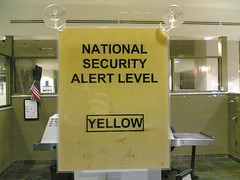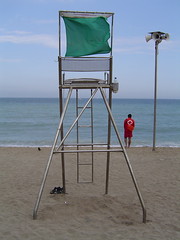Inventory of Spatial and Location-Aware Applications Featured in 24
Posted: May 6th, 2007 | 1 Comment »Thierry Joliveau has performed a very detailed inventory of the spatial and location-aware applications featured in the TV Serie 24. In Essai d’inventaire des techniques géonumériques dans 24 heures chrono lists the techniques and devices used. I intended to categorize them as (screenshots courtesy of Thierry Joliveau):
Data capture and visualization
GSM positioning, GPS enabled pedestrian navigation system, GPS enabled car navigation system, RFID positioning, car plate detection by highway CCTV, remote tracking of a GPS enabled cellphone, locate a building with thermal scanner, tracking a helicopter fleet, suspect tracking with bank transactions



Mobile use
Download of a map onto a PDA, download of a satellite image onto a PDA, download of a map onto a cellphone, transfer of coordinated onto a PDA, transfer of spatial data onto a TabletPC


Geodata analysis
Real-time observation of satellite images, spatial analysis to locate a cellphone, visualization by satellite with infrared sensor



Interestingly some scenes feature the limitations of the technologies (here it takes time for a GPS to get a fix).

Relation to my thesis: Beyond arguing if these examples are technically feasible, I am interested to see how the types of location information and visualizations the characters of 24 Hours use to get a sense of space in an unknown (unfriendly) environment. Most of the spatial coordination seems to happen over a cellphone with somebody in a control room feeding the dispatched agents.
In a foresight approach, a more detailed analysis could lead to a reflection on our visions of location-aware systems and what leads us to these visions. Frédéric Kaplan performed this type of extended analysis of the visions of the past to understand the future in Futurs 2.0 : La société transparente, utopie du 21e siècle ?



